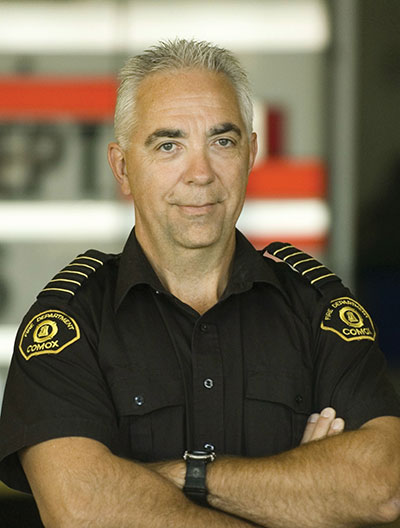
Features
Training
Stopbad: August 2013
If you don’t like training or change, you are in the wrong business: get out now!
July 29, 2013
By Gord Schreiner
If you don’t like training or change, you are in the wrong business: get out now!
We need to train as if lives depend on it, because they do. We need to constantly evolve because the environment we work in constantly changes.
#Stopbad is the Twitter-friendly nickname given to the one-day program (Safe and Effective Scene Management) that I have been delivering for the past couple of years. One of my many passions is taking a close look at firefighters’ injuries and deaths in the hope of never having one happen on my watch.
For several years now, I have been delivering four- and five-day scene-management courses all over British Columbia. A couple of years ago, a smaller fire department asked me if I would put together a simple one-day, no-nonsense, scene-management program. I was happy to oblige. The Safe and Effective Scene Management program was an instant hit, with several more departments asking me to deliver the same program.
I decided to take the program to the executives of the Fire Chiefs Association of British Columbia (FCABC) to see if the association had any interest in supporting it. After my presentation, the FCABC contracted me to deliver 10 sessions throughout British Columbia. These 10 sessions quickly turned into more than 20 sessions and covered almost 200 fire departments in British Columbia and Alberta.
The program received a lot of attention on social media and other platforms, and sparked the interested of the Maritime Fire Chiefs Association, which also contracted me to visit the east coast and deliver the program. In April, I taught 11 sessions in the four Atlantic provinces to more than 500 career and volunteer firefighters, representing more than 200 fire departments. Again, the response was overwhelming.
Why #Stopbad? Over my lengthy career, I have seen and read about the same bad things happening to firefighters, over and over again. Some of these bad things injure or kill our firefighters. While some might call some of these bad things close calls, I find that they are often bad calls. Many of these so-called close calls are very predictable and could have been managed more safely and effectively.
One example of this is placing firefighters on a burning roof. It can be very challenging for firefighters to operate on a roof, even without a fire in the roof. Add a fire, and it is very likely that something will go wrong. The risk versus reward in this scenario does not make sense. Operating above a fire is simply very dangerous.
Another example is the radio call signs we use. Many departments use call signs that are task-oriented and can change during an event, making it difficult for firefighters to remember their call signs. In a future column, I will explain the very popular Call Signs for Life program that my department has been successfully using for several years. Under the Call Signs for Life format, firefighters use the same call signs for their entire careers, regardless of the task or incident. Call Signs for Life is just one of the many components of the #Stopbad program.
The #Stopbad program offers some suggestions for safely and effectively managing a fire in a single family home. The skills learned from this example can then be put to use at larger, more complex emergencies.
In future columns, I will discuss responding to the emergency, both in a fire engine and to the station in a private vehicle, in the case of a volunteer. You can also expect discussions on size-up (including victim survivability), developing an incident action plan (defensive or offensive), accountability, portable radio communications, the placing of the first hoseline, searches, venting, rapid intervention teams, a glossary of terms, back-up teams, stand-by teams, incident safety officer, staging and firefighter rehab.
The program is intended for all members of your department, from chief officers to recruits. The program also works for career, paid on-call, volunteer and industrial firefighters. Having a simple program for everyone means we can all be on the same page when it comes to firefighter safety.
My intent is to get you thinking about risk versus reward at every incident and to choose an incident action plan through which you have a very high chance of bringing all of your firefighters home.

|
|
Gord Schreiner joined the fire service in 1975. He is the full-time fire chief in Comox, B.C., where he also manages the Comox Fire Training Centre. He is a structural protection specialist with the Office of the Fire Commissioner and worked at the 2010 Winter Olympics as a venue commander. Schreiner also serves as the educational chair for the Fire Chiefs Association of British Columbia. In 2010, he was named the CAFC’s career chief of the year and was also presented the award of excellence from the Justice Institute of B.C. He has a diploma in fire-service leadership and has traveled nationally and internationally delivering fire-service training. Contact Gord at firehall@comox.ca and follow him on Twitter at @comoxfire.
Print this page